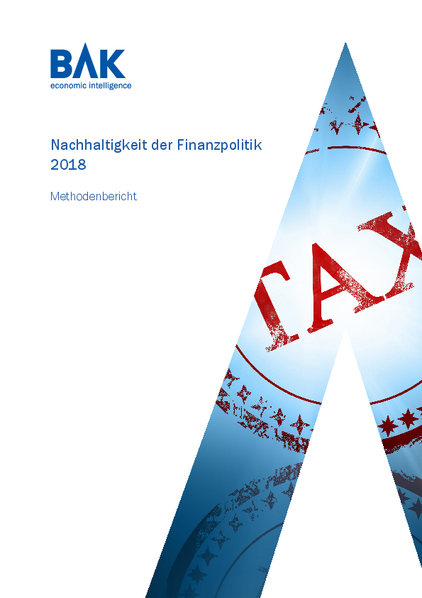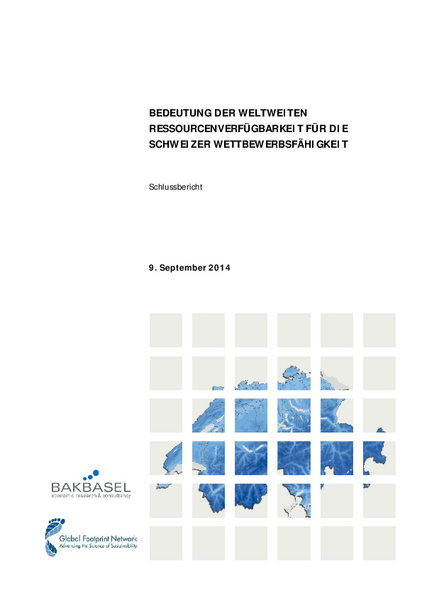Regional Analysis - Switzerland & International
The increasingly intense competition between locations creates major challenges for municipalities, cities and regions in Switzerland and internationally. Each region has its own economic, demographic and geographical profile, from which individual needs and necessities for action are derived. BAK Economics provides well-founded data and analyses individually tailored to regional needs - up-to-date and efficient. BAK Economics has been producing economic studies for regions in Switzerland and throughout Europe since 1980. Thanks to this long-standing experience, BAK Economics today has a wide range of analytical and consulting competencies at its disposal to answer questions relevant to the regional economy.
Our 2020 data from the updated RED database provide a first look at the impact of the Corona pandemic at the country and regional levels.
| On the pulse of development with current data and facts Keep an overview in a dynamic economic world: Recognise changes in your region and competitor regions more quickly. Review your strategies and readjust them. |
| Classification of regional developments and framework conditions Identify the strengths and weaknesses of your economic region in comparison with competitor and reference regions. |
| Argumentation for your economic region Convince interested investors of the strengths of your region, communicate your strategy and show the public where your region wants to go. |
| Sound strategy development Our data and analyses form a solid foundation for the development of a viable regional economic strategy. Get to know the characteristics of your region, assess its future viability and set the right course. |
| Smart Specialisiation Use the latest findings of regional economic research and innovation theories to develop your region in an even more targeted way. |
Angebotsübersicht
Whether at commune, district or cantonal level - all Swiss regions as well as functional areas can be analysed "tailor-made". Data for functional regions such as labour market regions or agglomerations around cities are also available. This means that over 3,000 different regions in Switzerland can be analysed.
The international benchmarking database (BAK Regional Economic Database (RED)) has 1900 regions in 25 countries. In most countries, the regions are available at the various administrative levels (mostly TL3/NUTS 3 at the lowest level). In countries like Germany, this corresponds to a differentiation from districts, planning regions to federal states. Comparisons can thus take place at different levels of territorial authorities, but also for arbitrarily aggregated regions such as metropolitan and border regions. This would allow regions to be compared at eye level. If necessary, the regional analysis level can be deepened and extensions to include additional countries are also possible.
The key figures of BAK Economics for the Swiss regions go back to 1980, which means that the long-term development of an economic area can also be examined. Thanks to the forecast data, it is also possible to look into the future: The BAK analysis models for Switzerland currently have a horizon up to 2040. For a selection of key figures, quarterly and monthly data (only historical) are also available in addition to the annual figures. This means that shorter-term analyses are also possible. For example, the development of overnight stays by season or the increase in unemployment figures in the first corona lockdown.
The BAK Regional Economic Database includes annual values from 1995 to the respective previous year (currently 1995-2020, from Sept. 1995-2021). The database is updated annually.
In order to be successful in the future, the attractiveness of a location is crucial. For a successful regional location policy, however, it is necessary to focus on those that can be influenced politically and are decisive for the settlement of companies and workers. We provide you with a comprehensive set of indicators in the areas of taxation, accessibility, technology, innovation, regulation, skilled labour and quality of life, in order to present the strengths of the region in comparison to competitor regions, to identify its own weaknesses for the internal strategy process or to be able to communicate the advantages to companies willing to settle here.
Accessibility
In an increasingly globalised world, the accessibility of a location essentially determines the extent to which the respective region can participate in the economic growth process. For companies, access to procurement and sales markets plays a central role in being able to take advantage of market potential. The more the regional and international integration of research, production, logistics and sales processes progresses, the more important it is to be able to reach them quickly and as directly as possible.
The accessibility models of BAK Economics follow the concept of "outbound accessibility", i.e. the travel time and frequency needed to reach other regions from the region are used. The resulting indicator reflects the total potential of all regions without any limitation on travel time. However, the travel destinations are weighted by the travel time and the gross domestic product of the region.
The following indicators are calculated using BAK Economics' accessibility models:
- The global accessibility index measures the accessibility of regions worldwide outside Europe.
- The continental accessibility index reflects the accessibility of all regions in Europe.
- The regional accessibility index covers accessibility within Swiss regions and includes regular routes, such as commuter routes.
The data has been collected regularly by BAK Economics since 2003. Accessibility profiles can be created for competitor regions with absolute travel times by destination, but basic statements are also possible ("how many percent of the world GDP can be reached in how many hours"), differentiated by relevant sales markets and production locations.
Taxation
The tax burden on companies and the highly qualified is considered very important in the global competition between locations. The BAK Taxation Index for companies and the highly qualified shows which locations have a good hand in international tax competition by taking the actual taxes incurred as a basis.
The effective tax burden as a percentage of the profit of a highly profitable investment (average effective tax burden of companies) is central to a company's location decision. In addition, the marginal tax burden (relevant for location expansion) is available, among other things. The BAK Taxation Index for the highly qualified provides the effective tax burden for three (medium to high) income classes and two family statuses respectively. In addition to income taxes, non-wage labour costs with tax character on the employer and employee side are also taken into account. The BAK Taxation Index has been regularly surveyed by BAK Economics together with the Centre for European Economic Research (ZEW, Mannheim) since 2003.
Innovation
The aim of measuring innovative strength is to break down and present the innovation efforts of regions as broadly as possible. The creation of an innovation-friendly environment is important across all sectors, because new things increasingly do not emerge from new technologies, but from the intelligent linking of existing technologies. The quality of the universities and research institutes as well as the research expenditures are decisive for the innovation environment of a region; for the economic dynamics it is additionally decisive how the research focal points correspond with the economic structure, i.e. the economic specialisation of the region. For the industrial sectors, patent activities in particular are an important measure of future innovative strength. These three indicators (quality of universities, research expenditures, patents), combined with the research landscape and the economic structure, form the indicator for a region's innovative strength.
Technologies
The rapid rise of new technologies - from electromobility and artificial intelligence to the switch to climate- and resource-friendly production processes - is changing companies, industries and society. It poses major challenges for regions and their companies. Only regions in which these new technologies are widely diffused and applied will remain competitive in the future. BAK Economics has therefore developed an approach to measure the diffusion of these technologies in the regions. Using patent data, BAK Economics has defined over 70 "future technologies" together with the Swiss Patent Office.
Our analyses make it possible to answer numerous questions about the technological strength of your region:
- What are the technological strengths and competence clusters in your region and where do technological gaps need to be closed?
- What are the most important companies and researchers/research institutions for the technologies relevant in the region (RESEARCH LEADERS)?
- Where are the HIDDEN TECH CHAMPIONS in the target regions/markets?
- Which TECHNOLOGY COMBINATIONS lead to better research results?
- In which technologies does the combination of basic university research and applied entrepreneurial research work best?
Further information can be found here.
Skilled workers
All regions face the challenge that labour markets are subject to both numerical and skills constraints. Due to the further increase in knowledge intensity in economic processes and growing bottlenecks in individual occupational groups, the availability of skilled labour as well as the competition for the best talents is becoming an ongoing strategic task. The availability and quality of skilled labour is measured annually using various regional and internationally comparable indicators, such as the labour force participation rate, labour force potential, unemployment rates, educational level of the workforce and job vacancies.
Sustainability
The goal of an economic policy oriented towards sustainability should be to increase the welfare of today's population, but at the same time not to live at the expense of either the environment or posterity. An essential factor here is a sustainable financial policy that does not act at the expense of future generations. BAK Economics has been active for many years in monitoring and advising regions and cantons on this topic in the area of "public finances".
Innovation is central to tackling climate change, as is the sustainability of processes and products. For the regions, therefore, the promotion of innovative strength in the area of "green technologies" plays an increasingly important role. BAK Economics can support regional location policy at this point with data bases and analyses. Based on patent data, "green technologies" (Green Tech) were developed, which make the innovation dynamics in Green Tech clusters precisely identifiable and (internationally) comparable. Green Tech includes all environmentally friendly technologies that increase energy efficiency, reduce resource and energy consumption, reduce pollution and enable more sustainable economic activity. Companies must operate more sustainably in order to remain competitive in the future, as products in all sectors will be measured by their energy balance. Green Tech will thus become a key and cross-sectional technology for all industries.
Quality of life
Quality of life is a key attraction factor for (highly qualified) workers. These in turn are decisive for the innovative capacity and growth dynamics of regional economies. The basis is a classification of the quality of life in an international comparison using a variety of quantitative indicators. These are grouped into three areas: Economic environment (income, taxes, rents, etc.); social environment (perception of safety, health care, international schools, etc.) and environmental conditions (climate and location, emissions, etc.) Data sources are internationally valid statistics (OECD, European Social Survey, World Value Survey, International Baccalaureat, etc.). Furthermore, if necessary, the analysis can be extended by subjective qualitative assessments of the quality of life by professionals in the region, for example through surveys or interviews.
The economic structure is the basis of regional prosperity and thus decisive for future development. The analysis of the future viability of a regional economic structure is thus the basis for any strategic action. BAK Economics offers the largest possible selection of sectors and extensive flexibility in their composition. This allows the economic structure of a region to be mapped realistically.
BAK Economics has the official NO-GA coding for Swiss economic data and has prepared the NOGA 2-digit industries as standard. 3-digit and 2-digit industries can thus be combined as desired - even across sectors. 190 sectors and sector aggregates are available as standard.
The BAK Regional Economic Database (RED) comprises 115 individual sectors. The manufacturing sector consists of 70 industries (NACE 3-digit) while the service sector is broken down into 30 industries (2-digit). The industries can be combined in any way. The database currently includes 200 industry or branch aggregates as standard.
What our clients say
"Thanks to the regional analysis carried out with BAK Economics and a participatory process involving the population, officials and politicians, we have produced guidelines for a shared regional development strategy. A concrete tool to help guide the strategic choices of administrations."
 Roberta Angottidirector Ente Regionale di Sviluppo del Luganese (ERSL)
Roberta Angottidirector Ente Regionale di Sviluppo del Luganese (ERSL)





